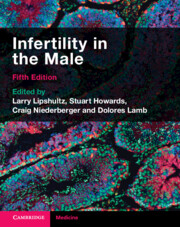272 results
Head and Neck Cancer: United Kingdom National Multidisciplinary Guidelines, Sixth Edition
-
- Journal:
- The Journal of Laryngology & Otology / Volume 138 / Issue S1 / April 2024
- Published online by Cambridge University Press:
- 14 March 2024, pp. S1-S224
- Print publication:
- April 2024
-
- Article
-
- You have access
- Open access
- HTML
- Export citation
The road to recovery: conservation management for the Critically Endangered Bali myna shows signs of success
-
- Article
-
- You have access
- Open access
- HTML
- Export citation
An application of the Causal Roadmap in two safety monitoring case studies: Causal inference and outcome prediction using electronic health record data
-
- Journal:
- Journal of Clinical and Translational Science / Volume 7 / Issue 1 / 2023
- Published online by Cambridge University Press:
- 21 September 2023, e208
-
- Article
-
- You have access
- Open access
- HTML
- Export citation
Assessing past versus present severe acute respiratory coronavirus virus 2 (SARS-CoV-2) infection: A survey of criteria for discontinuing precautions in asymptomatic patients testing positive on admission
-
- Journal:
- Infection Control & Hospital Epidemiology / Volume 45 / Issue 2 / February 2024
- Published online by Cambridge University Press:
- 13 September 2023, pp. 237-240
- Print publication:
- February 2024
-
- Article
-
- You have access
- Open access
- HTML
- Export citation
Characteristics and outcomes of Clostridioides difficile infection after a change in the diagnostic testing algorithm
-
- Journal:
- Infection Control & Hospital Epidemiology / Volume 45 / Issue 1 / January 2024
- Published online by Cambridge University Press:
- 18 July 2023, pp. 57-62
- Print publication:
- January 2024
-
- Article
- Export citation
The host galaxy of FRB 20171020A revisited
-
- Journal:
- Publications of the Astronomical Society of Australia / Volume 40 / 2023
- Published online by Cambridge University Press:
- 11 July 2023, e029
-
- Article
-
- You have access
- Open access
- HTML
- Export citation
Section 4 - Treatment of Male Infertility
-
- Book:
- Infertility in the Male
- Published online:
- 08 July 2023
- Print publication:
- 15 June 2023, pp 399-502
-
- Chapter
- Export citation
Index
-
- Book:
- Infertility in the Male
- Published online:
- 08 July 2023
- Print publication:
- 15 June 2023, pp 541-566
-
- Chapter
- Export citation
Section 1 - Scientific Foundations of Male Infertility
-
- Book:
- Infertility in the Male
- Published online:
- 08 July 2023
- Print publication:
- 15 June 2023, pp 5-106
-
- Chapter
- Export citation
Section 2 - Clinical Evaluation of the Infertile Male
-
- Book:
- Infertility in the Male
- Published online:
- 08 July 2023
- Print publication:
- 15 June 2023, pp 107-328
-
- Chapter
- Export citation
Contributors
-
- Book:
- Infertility in the Male
- Published online:
- 08 July 2023
- Print publication:
- 15 June 2023, pp vii-x
-
- Chapter
- Export citation
Abbreviations
-
- Book:
- Infertility in the Male
- Published online:
- 08 July 2023
- Print publication:
- 15 June 2023, pp xiii-xviii
-
- Chapter
- Export citation
Section 3 - Laboratory Diagnosis of Male Infertility
-
- Book:
- Infertility in the Male
- Published online:
- 08 July 2023
- Print publication:
- 15 June 2023, pp 329-398
-
- Chapter
- Export citation

Infertility in the Male
-
- Published online:
- 08 July 2023
- Print publication:
- 15 June 2023
Section 5 - Health Care Systems and Culture
-
- Book:
- Infertility in the Male
- Published online:
- 08 July 2023
- Print publication:
- 15 June 2023, pp 503-540
-
- Chapter
- Export citation
Contents
-
- Book:
- Infertility in the Male
- Published online:
- 08 July 2023
- Print publication:
- 15 June 2023, pp v-vi
-
- Chapter
- Export citation
Introduction
-
-
- Book:
- Infertility in the Male
- Published online:
- 08 July 2023
- Print publication:
- 15 June 2023, pp 1-4
-
- Chapter
- Export citation
Foreword
-
- Book:
- Infertility in the Male
- Published online:
- 08 July 2023
- Print publication:
- 15 June 2023, pp xi-xii
-
- Chapter
- Export citation
Copyright page
-
- Book:
- Infertility in the Male
- Published online:
- 08 July 2023
- Print publication:
- 15 June 2023, pp iv-iv
-
- Chapter
- Export citation
Chapter 15 - The Varicocele – Approaches to Diagnosis and Management
- from Section 2 - Clinical Evaluation of the Infertile Male
-
-
- Book:
- Infertility in the Male
- Published online:
- 08 July 2023
- Print publication:
- 15 June 2023, pp 253-276
-
- Chapter
- Export citation










